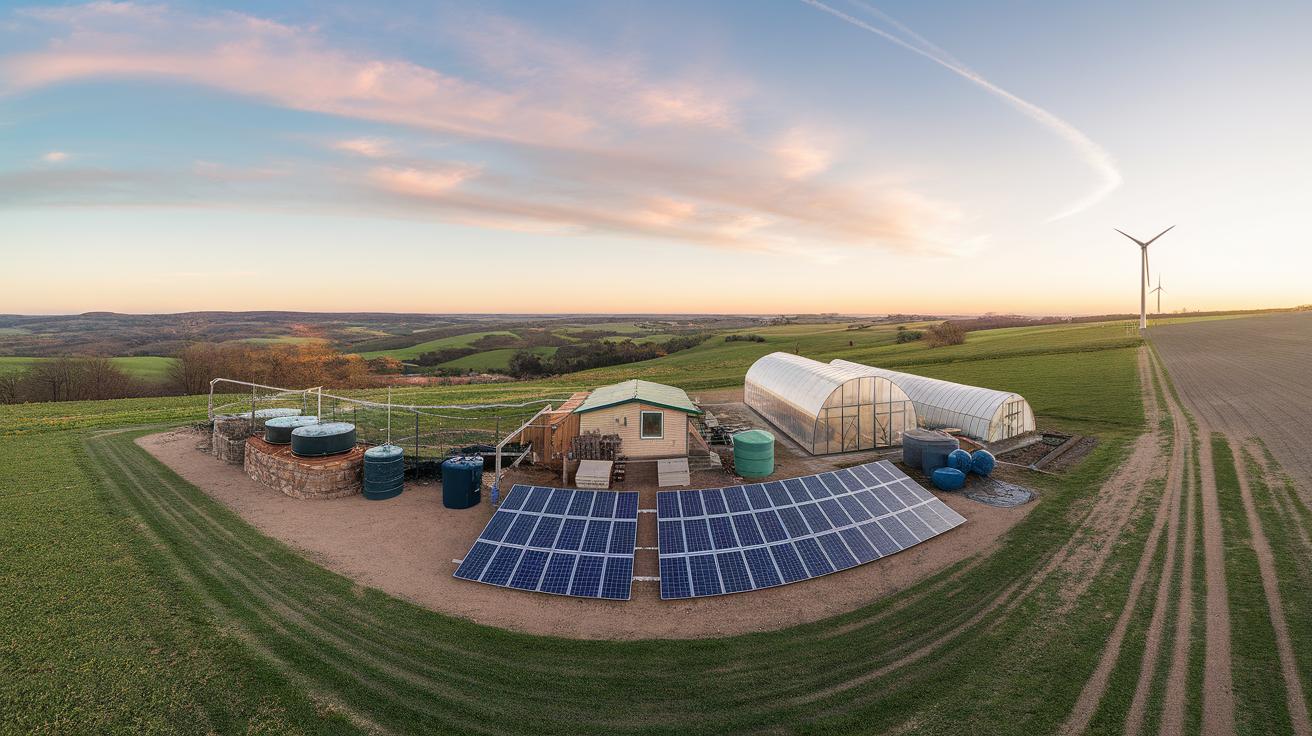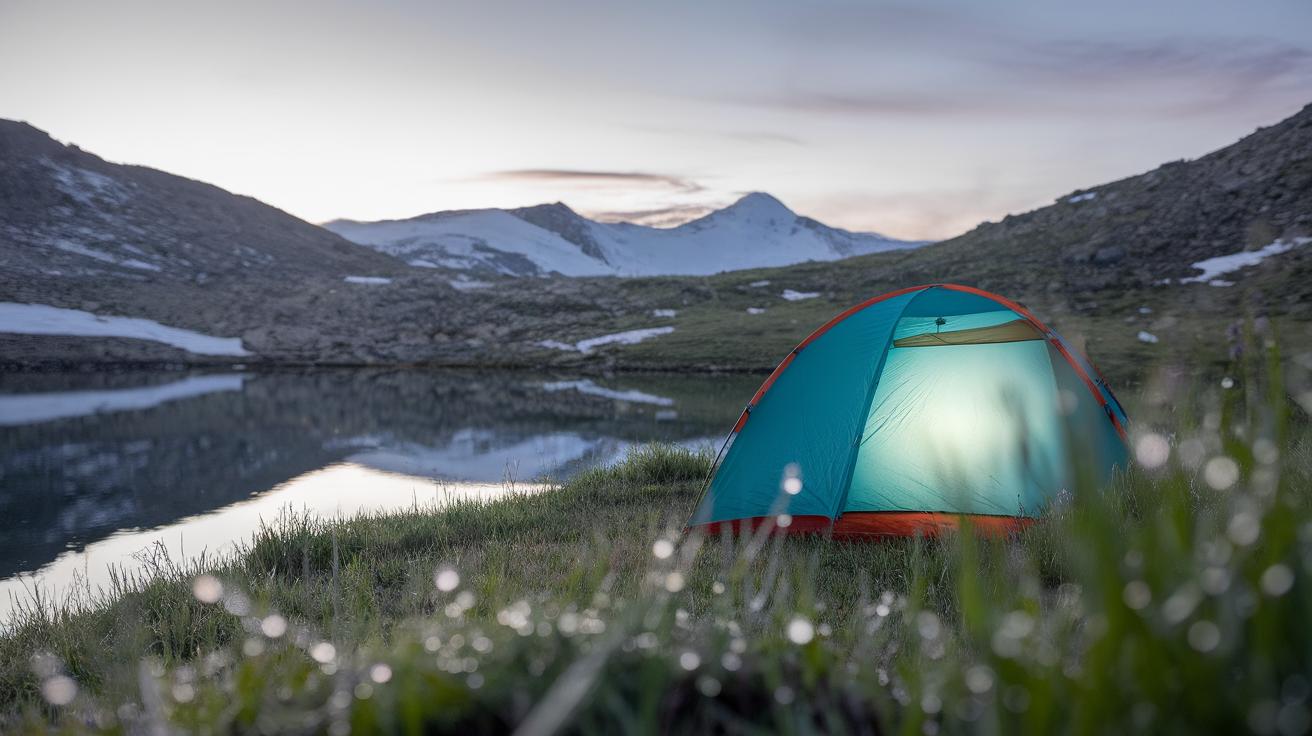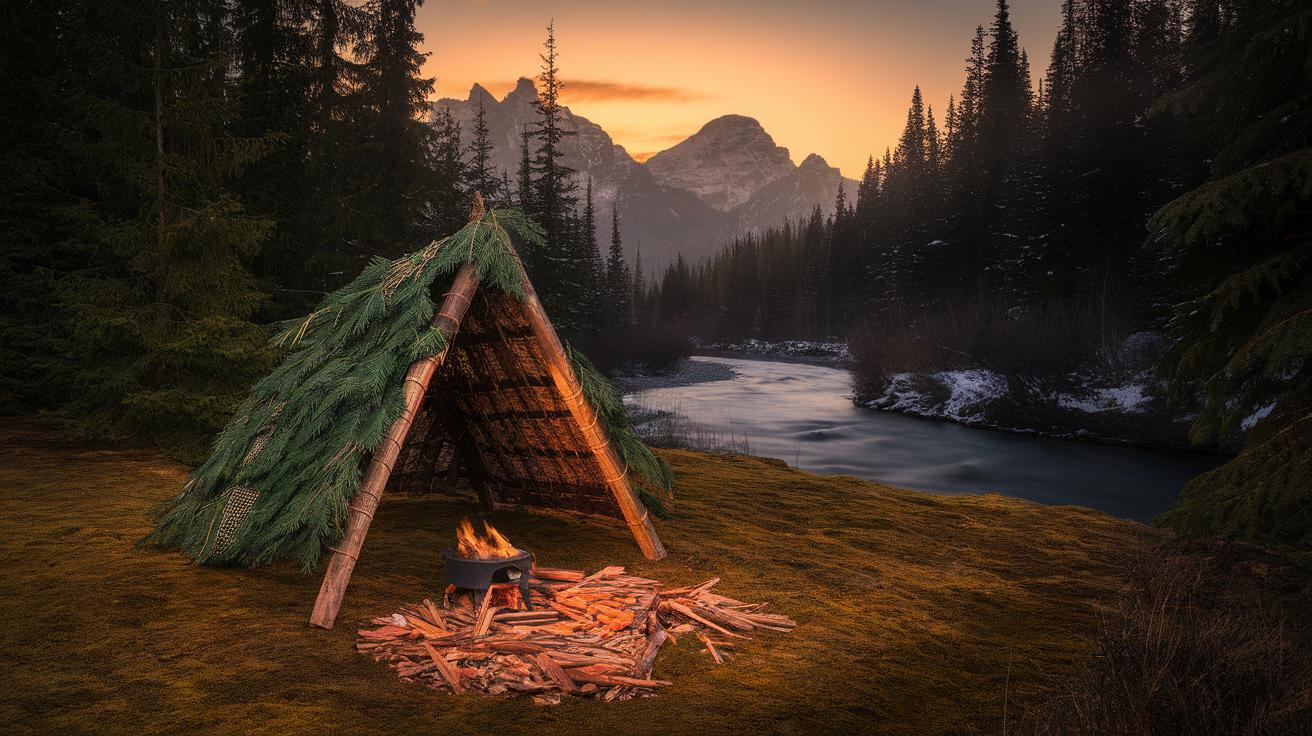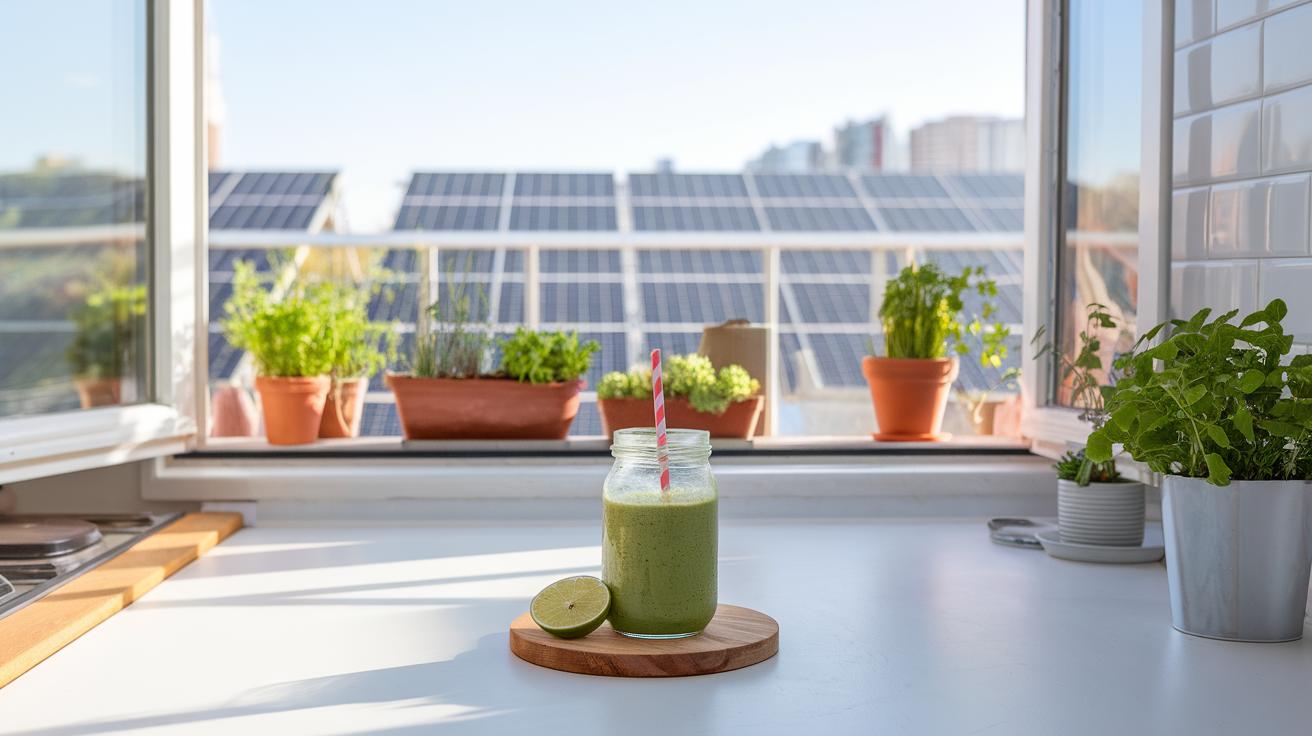Introduction
Rustic cabin interiors bring a unique charm to any living space. They combine natural materials and traditional craftsmanship to create a welcoming environment. You can feel the warmth and comfort the moment you step inside a rustic cabin. These interiors often use wood in various forms, stone accents, and earthy colors. The style fits well into nature settings, making it perfect for cabins and vacation homes.
Designing a stylish rustic cabin interior involves choosing the right elements that add character and warmth. You can focus on furniture, lighting, textiles, and decorations that promote comfort and simplicity. This article will guide you through essential ideas and practical tips to transform your cabin interior into a cozy, stylish retreat. You will learn how to blend rustic charm with modern needs effectively.
Choosing Natural Materials for Rustic Warmth

Your cabin feels warm and inviting when you use natural materials like wood, stone, and metal. These materials bring texture and a sense of authenticity that machines or plastics can’t match. Wood adds softness and warmth, stone brings rugged texture, and metal introduces subtle industrial charm.
Each wood type offers unique qualities. Pine feels light and soft, great for walls and ceilings. Cedar resists damage from moisture and pests, making it perfect for furniture or paneling. Oak provides strength and a rich grain that ages beautifully. Stones vary too—smooth river rocks create calm flooring, while rough-cut stones add ruggedness to fireplaces or accent walls.
Look for wood with durable finishes that highlight the grain without hiding imperfections. For stone, pick slabs that resist cracking and weigh what fits your structure. Combining these materials creates a layered look that feels natural and lasting. What natural material will define your space?
Wood Types and Finishes
Pine is a favorite for rustic cabins because it’s easy to work with and affordable. Its light color brightens rooms, but you can deepen it with stains. Cedar’s aromatic scent and natural oils keep bugs away and work well in damp spaces. Oak, heavier and denser, adds a classic look with strong durability ideal for floors or tables.
Finishes can change the wood’s personality. Weathered finishes bring aged character, making new wood appear seasoned. Stains enhance the grain and add color without hiding wood patterns. A natural finish preserves the raw look, letting knots and marks show through. Which finish fits your cabin’s mood: rugged, polished, or natural?
Stone Elements for Texture
Stone works best for adding texture and grounding a room. Fireplaces often use heavy, rough stone to create a striking focal point that also radiates warmth. Accent walls trimmed in smooth stone add detail without overload. Flooring with stone offers durability and a cool touch underfoot, especially in summer.
The tactile quality of stone contrasts wood’s softness. It draws your eye and invites touch. Choosing local stone can tie your cabin to its environment and lower costs. Think about balance—too much stone makes a space cold, but paired with warm wood, it feels natural and cozy. How will stone balance your cabin’s look and feel?
Designing a Cozy Layout

Your cabin layout shapes how you feel in the space. Arrange furniture to invite relaxation while allowing easy movement. Keep main seating near the fireplace or windows to create a warm, lively center.
Open areas help everyone gather comfortably. But balance these with smaller, private corners for quiet moments. A reading nook or a small bench off the main room provides personal retreat without crowding the space.
Think about how you use each room daily. Does the dining area connect smoothly to the kitchen? Are walking paths clear and natural? Avoid overcrowding by spacing pieces to let the cabin breathe.
Ask yourself: Where do you want to spend time alone? Where will your guests gather? Designing with these questions guides a space that feels both inviting and functional.
Maximizing Space with Function
Choose furniture that works hard for you. A bench with storage inside, a coffee table with hidden compartments, or a sofa bed can save space without sacrificing rustic style.
Look for pieces made from wood or wrought iron that fit the cabin’s character. Use shelves that show off natural items while hiding clutter in baskets.
Keep pathways clear by storing less-used items in trunks or under seats. Multifunctional furniture reduces mess and keeps the room open and welcoming.
Consider your daily activities. Would a fold-out desk or nesting tables ease your routine? Combining function with rustic charm keeps your cabin feeling cozy and organized.
Creating Intimate Zones
Smaller seating groups offer quiet spots inside larger rooms. A pair of armchairs beside a window or a cushioned nook along a wall invites peaceful breaks.
Use rugs and lighting to define these areas. A warm lamp or a soft throw adds comfort and draws you in.
Arrange seats facing each other to encourage conversation, or place a single chair for solitude. These pockets create balance, letting your space support both social moments and private repose.
What small corners in your cabin could become your go-to retreat? Designing intimate zones brings warmth beyond the main living areas.
Incorporating Warm Lighting

Lighting shapes how you experience your cabin. It can make a room feel lively or calm, open or intimate. In rustic design, warm lighting adds a sense of comfort and charm. It brings out natural wood tones and textured surfaces, helping the space feel inviting.
Look for lighting that emits a soft, golden glow rather than harsh white light. This type of lighting gently highlights furniture and décor without overwhelming your eyes. You can layer different lighting sources, such as ceiling fixtures, table lamps, and wall sconces, to create depth and interest.
Think about areas where you spend most time. Do you want brighter lights for cooking or reading? Or softer lights for relaxing by the fire? Using dimmable lights can help you customize the mood anytime. How could adjusting your lighting change the way your rustic cabin feels?
Choosing Warm Bulbs
Warm white bulbs emit light with a color temperature between 2700K and 3000K. This range produces a gentle amber glow that suits rustic interiors well. Cooler bulbs, like daylight or cool white, often feel sterile and clash with the natural materials used in cabins.
Using warm bulbs brings out the warm browns of wood, the soft colors of textiles, and the earthy tones of stone or brick. The light does not glare or create harsh shadows, making rooms feel softer and more welcoming.
You might want to try LED bulbs labeled as “soft white” or “warm white.” These options save energy but still provide cozy lighting. What changes could you see in your cabin if you swapped out cooler bulbs for warm ones?
Lighting Fixtures with Rustic Appeal
Rustic lighting fixtures often feature natural materials and simple, rugged designs. Wrought iron chandeliers stand out as statement pieces. Their dark metal and sturdy shapes complement wood ceilings and beams.
Lantern-style lights add old-world charm. They work well as hanging fixtures or table lamps and provide a flickering effect similar to candlelight. Wall sconces with aged metal or distressed finishes offer subtle accent lighting that enhances cozy corners.
Consider fixtures with exposed bulbs or warm glass inserts to maintain an authentic look. Mixing different styles within a consistent rustic theme can bring character without feeling cluttered. Which rustic fixture would suit your cabin’s personality best?
Selecting Furniture That Fits Style And Comfort

Choosing furniture for a rustic cabin means balancing style and comfort. Pick pieces that reflect natural materials like wood and leather, but also feel relaxing for long hours. Sturdy wooden frames with soft cushioning work well in seating and beds.
Look for furniture that matches your cabin’s size. A bulky sofa might crowd a small space, while a slim wooden bench can fit neatly and adds charm. Think about how you plan to use each piece. Will the table host family meals or casual snacks? Does the bed need extra storage? These questions help select furniture that meets your practical needs.
Consider mixing old and new pieces to keep the space interesting. A handcrafted wooden chest can store blankets and also act as a coffee table. Comfort should never be compromised, so test seating for softness and support before you buy. Your rustic cabin should feel like a place you want to relax, not just look good.
Rustic Seating Choices
Choosing the right seating creates the heart of your cabin’s living area. Overstuffed sofas provide a welcoming place to sink into after a day outdoors. Their thick cushions offer warmth and support, which matches the cozy cabin mood you want.
Leather chairs bring durability and character to your space. They age gracefully and require little upkeep. A leather recliner or armchair can feel like a personal spot for reading or resting.
Wooden benches add a rustic touch and flexible seating when guests arrive. You can place them by the fireplace or dining table. Wooden benches keep the space casual while staying true to cabin style. How can you combine these seating types to fit your daily habits?
Functional Rustic Tables
Tables in a rustic cabin should be sturdy and fit the room’s overall look. Solid wood dining tables with visible grain give a natural vibe. Choose tables with a rough finish to match the rustic feel instead of polished or glossy surfaces.
Think about size and shape. A round table encourages conversation in smaller dining areas, while a long rectangular one handles larger groups. For coffee tables, look for ones with storage space or shelves under the top to hold magazines and blankets.
Selecting tables that are easy to maintain tops the list. Surfaces that resist stains and scratches work best when you eat or drink near the wood. Could a custom-built table using reclaimed wood bring more personality to your cabin interior?
Enhancing Interiors with Textiles

Using textiles in your cabin brings softness where wood and stone dominate. Rugs, blankets, and curtains add comfort and introduce color without overwhelming the rustic feel.
Choose natural fabrics like wool, cotton, or linen. They wear well and match the cabin’s earthy look. Synthetic materials often clash with a rustic style and can feel out of place.
Patterns can bring character to a space. Consider plaids, stripes, or simple geometric designs. These work well without distracting from the cabin’s natural elements. When picking colors, think about the surrounding woods—greens, browns, deep reds, and warm neutrals blend nicely.
How do your textiles make you feel when you walk into a room? Soft textures and rich colors invite you to relax and enjoy your cabin’s warmth. Using textiles this way creates a practical, welcoming environment that fits rustic living.
Rugs for Warmth and Style
Hardwood floors look great but can feel cold, especially in a cabin. Layering area rugs warms up the space and defines different zones, like a seating or dining area.
Look for rugs made from wool or jute. Wool traps heat and feels soft underfoot. Jute adds texture and suits rustic styles with its natural fibers. Size matters—your rug should be large enough so furniture sits partly on it, tying the space together.
Mixing plain rugs with patterned ones creates interest without clutter. Don’t hesitate to bring in a rug with subtle colors that echo the cabin’s wood tones. This approach keeps your cabin cozy and stylish year-round.
Blankets and Curtains
Blankets in wool, fleece, or chunky knit bring extra warmth and comfort. Choose colors like forest green, deep burgundy, or soft beige to blend with your cabin palette.
Curtains should add softness and filter light without blocking the outdoors. Linen or cotton curtains work best. These materials breathe and look natural. Patterns like plaid or simple checks add charm without dominating the room.
Think about function: heavy curtains keep cold out in winter, while lighter ones let breezes in during summer. Layering a sheer curtain beneath a heavier drape can give you control over light and privacy.
Have you noticed how textiles invite touch and comfort? Blankets and curtains soften rigid lines and make rustic cabins feel truly lived-in.
Adding Rustic Decorations and Personal Touches

Rustic decorations bring character and warmth to your cabin. Items like antlers or vintage signs offer a connection to the outdoors and history. Handmade crafts add texture and show the skill behind each piece. Nature-inspired objects such as pinecones, driftwood, or dried flowers create a direct link to the environment around your cabin.
When choosing decorations, think about what tells your story. A handcrafted wooden bowl from a local artisan or a quilt made by a family member can make your space feel truly yours. Mixing these rustic items with practical design keeps your cabin both stylish and comfortable.
How can these decorations reflect your lifestyle or interests? Personal touches transform rustic style into a setting where memories grow and warmth stays all year.
Using Natural and Handmade Items
Natural items show the beauty of the outdoors inside your cabin. Look for driftwood shelves, stone coasters, or woven baskets made from local grasses. Handmade pottery adds a unique touch that machine-made objects can’t match. These pieces carry the mark of their maker and brighten your rooms with authenticity.
You might collect pinecones or smooth river stones during hikes and display them in glass jars or wooden trays. A handmade candle with earthy scents can also enhance the natural feel. These choices support craftsmanship and bring a peaceful, grounded atmosphere to your space.
How often do you notice the details created by human hands? Choosing handmade means valuing that care and tradition in your cabin decor.
Personalizing Your Space
Including items that hold personal meaning enriches your cabin’s warmth. Old family photographs in wooden frames or heirloom furniture invite stories from the past. Handmade gifts or souvenirs from travels show moments that shaped who you are.
Your walls might display a painted map of favorite trails or a collection of vintage postcards. Adding a handmade throw pillow or knitted slippers bring comfort and unique charm. These touches make your cabin feel inviting and lived-in, no matter the season.
What objects around you carry a story worth sharing? Personalizing your rustic space lets you connect with your surroundings and those who visit, creating lasting comfort and character.
Maintaining Cabin Interiors for Longevity

Rustic cabins depend on natural materials like wood and stone, which need regular care to stay sturdy and fresh. When you maintain these surfaces properly, you protect your investment and keep your cabin’s charm alive for years.
For wooden surfaces, focus on preventing moisture buildup and pest intrusion. Use soft brushes or cloths to remove dust gently. A mixture of mild soap and water works for cleaning, but never saturate the wood. After cleaning, dry the surface completely to avoid mold and rot. Applying a wood sealant can block moisture and keep pests away. Inspect your wood every few months for small cracks or insect damage, especially near windows and doors where moisture often gathers.
Stone features add character, but they also need attention. Clean stone with a soft brush and water or a stone-specific cleaner free from harsh chemicals. Avoid acidic cleaners like vinegar as they can erode stone. Sealing stone surfaces every year creates a protective barrier against stains and moisture. Watch for chips or cracks and fix them promptly to prevent further damage. How often do you check your cabin’s stone work? Routine care saves money and preserves its natural beauty.
Wood Care and Protection
Wood surfaces demand gentle cleaning techniques. Start by removing dust using a microfiber cloth or soft brush. If dirty spots appear, clean with a diluted soap solution applied lightly to the wood. Make sure to wipe away any excess moisture and allow wood to dry fully.
Consider applying a protective finish such as oil or wax every six months. These finishes form a barrier that keeps moisture out and reduces the chance of cracking. Do you know where moisture tends to collect around your home? Check those spots often. For pest control, natural remedies like orange oil or cedar oil can repel insects without harsh chemicals.
Stone Maintenance Tips
Stone can trap dirt and grime, so clean it regularly with a soft brush and pH-neutral cleaner. Avoid abrasive tools that might scratch the surface. After washing, rinse thoroughly with water and dry with a soft cloth to prevent water spots.
Sealing stone is a smart move to maintain its look and durability. Applying penetrating sealers helps repel water and stains while allowing the stone to breathe. Inspect stone for damage after harsh weather or physical impacts and repair small cracks with an epoxy-based filler designed for stone. How does your stone hold up in cold or wet seasons? Paying attention to these details will extend its lifespan in your cozy cabin.
Balancing Rustic Style with Modern Comforts

Modern Heating Solutions offer practical ways to keep your cabin warm without disrupting its rustic charm. Wood stoves remain one of the most popular options. They provide a cozy glow and retain the look of traditional cabins. Pairing a wood stove with insulated walls helps retain heat for longer periods. Radiant floor heating works quietly under wooden floors, maintaining warmth evenly throughout the space. This type of heat avoids bulky radiators, preserving clean rustic lines. You might also consider propane or pellet stoves; they offer efficient heat while requiring less daily upkeep. Choosing heating methods that complement natural materials supports a balanced look and function. What heating method suits your cabin style and lifestyle while keeping old-world appeal? How can you make sure your heating choice adds to comfort without overpowering design?
Modern Heating Solutions
Keeping your cabin warm is key to comfort. Wood stoves bring both heat and ambience without clashing with rustic materials. Radiant heating provides subtle warmth that doesn’t interrupt the visual appeal of wood and stone surfaces. It works by circulating warm water through pipes under the floor, gently heating the room. This avoids cold spots and bulky heating units. You should also think about integrating programmable thermostats so your cabin stays toasty only when in use. Propane or pellet stoves are efficient alternatives, offering steady warmth without smoke or ash. Look for models with simple, classic designs that don’t stand out. Combining these solutions allows flexible heating that feels natural and useful.
Technology That Fits
Modern technology can enhance your cabin without damaging its rustic vibe. Wireless internet boosts convenience for work and entertainment but avoid visible routers and cords. Place Wi-Fi routers inside cabinets or behind wood panels to keep them out of sight. Use smart lighting systems with dimmers to mimic natural light changes and save energy. Choose fixtures with matte finishes or wood accents so they blend naturally. Entertainment systems can be hidden in custom wooden cabinetry or behind sliding panels. When choosing televisions or speakers, look for compact, low-profile designs. Can you imagine adding tech that feels invisible yet improves your daily cabin experience? Thoughtful integration lets you enjoy modern perks while staying true to rustic roots.
Conclusions
Your cabin interiors should prioritize comfort and connection to nature. Using natural materials like wood logs and stone enhances the rustic feel. Select furniture that offers both style and function to create a relaxing atmosphere. Textiles such as woven rugs and soft throws help to soften the ruggedness of wood and stone.
Lighting plays a crucial role in setting the mood. Opt for warm, soft lighting options that invite you to unwind. Finally, personalize your space with rustic accessories that reflect your taste and make the cabin uniquely yours. By following these principles, you will enjoy a warm, inviting rustic cabin interior that suits your lifestyle and aesthetic.














